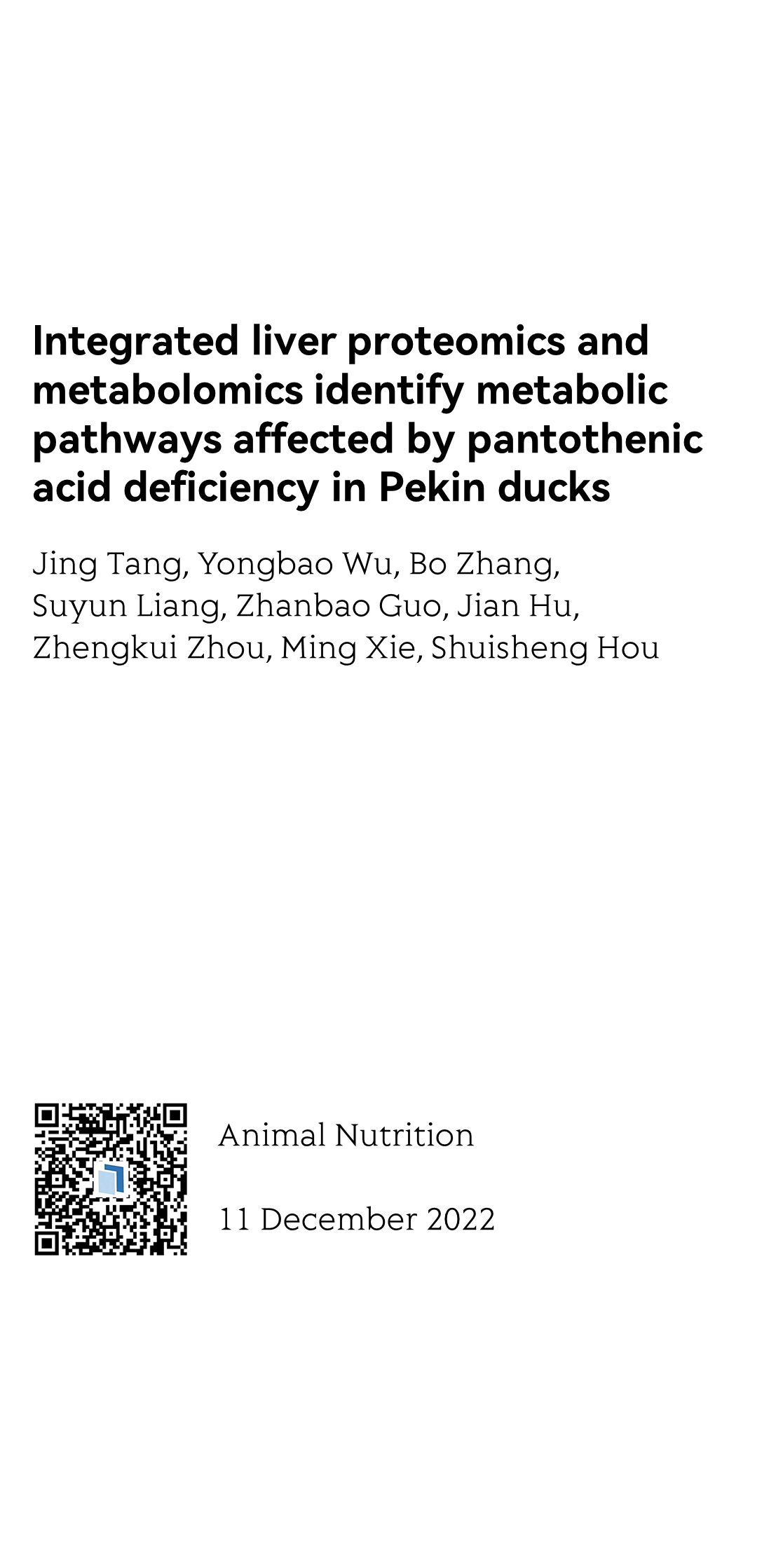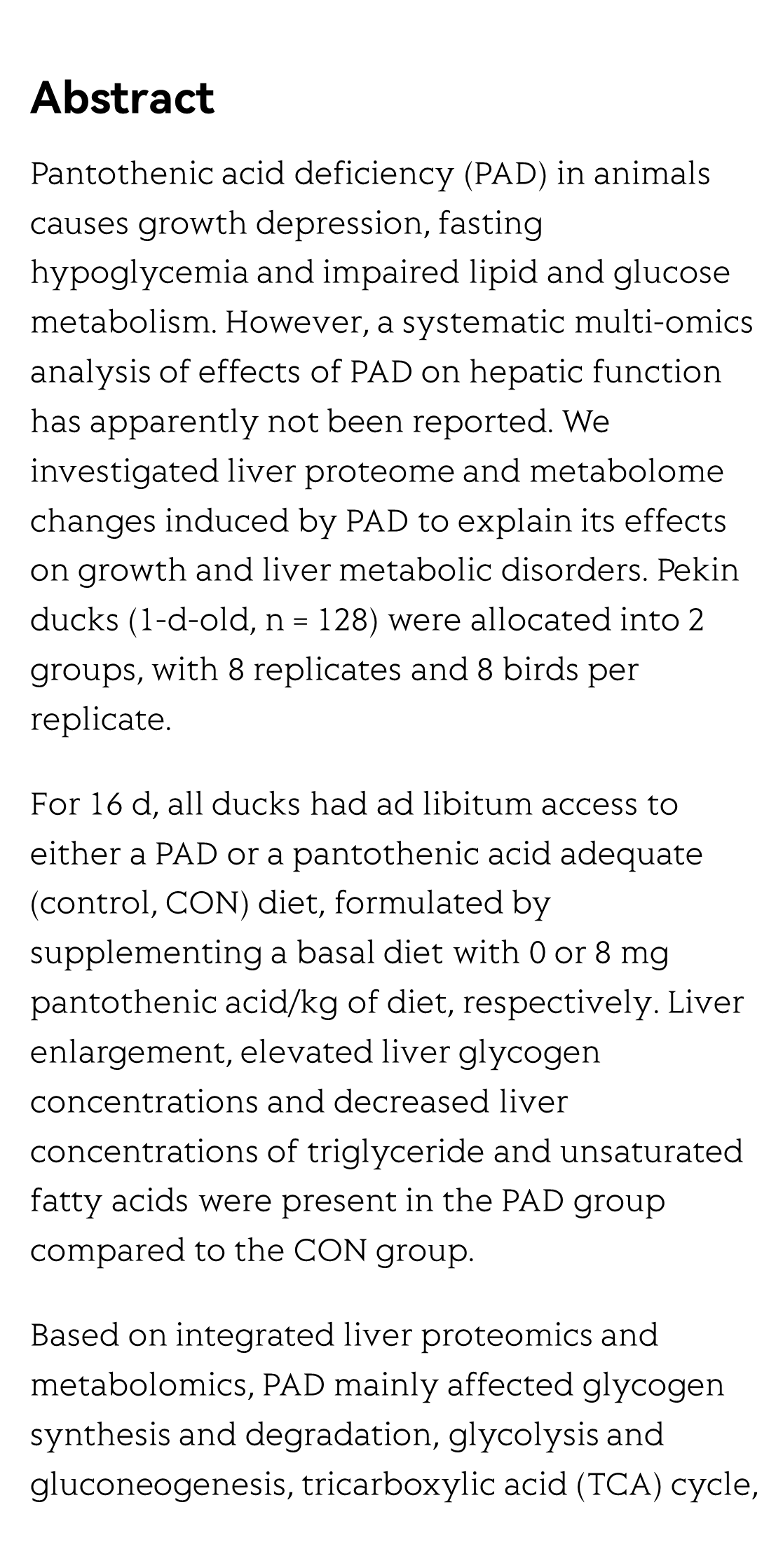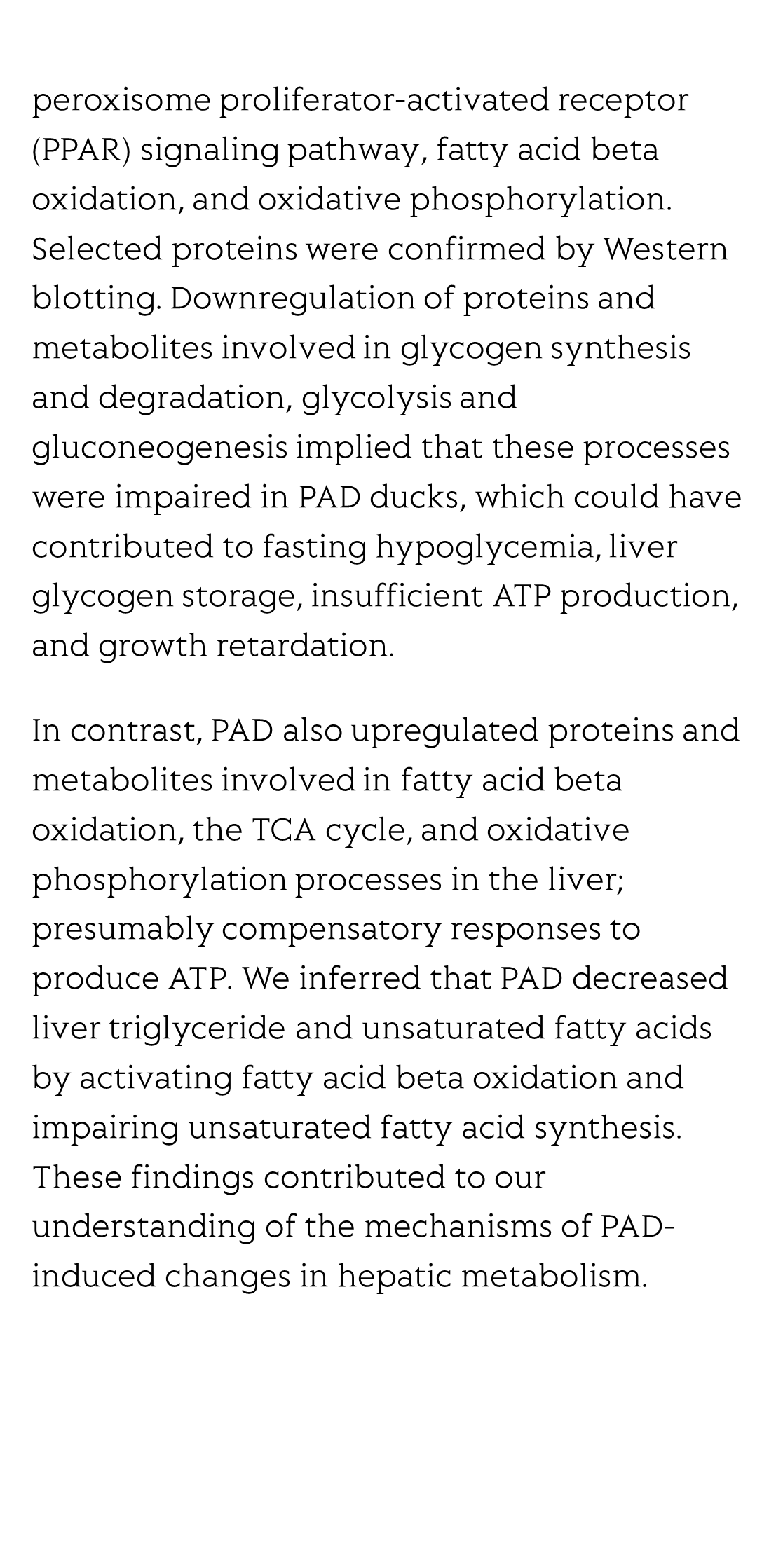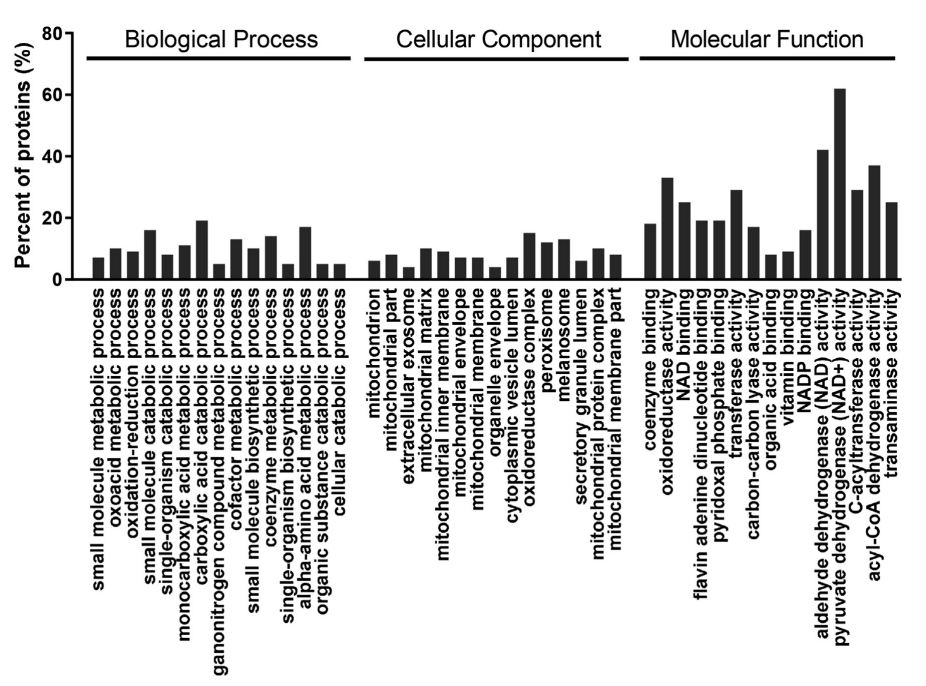(Peer-Reviewed) Integrated liver proteomics and metabolomics identify metabolic pathways affected by pantothenic acid deficiency in Pekin ducks
Jing Tang 唐静, Yongbao Wu 吴永保, Bo Zhang 张博, Suyun Liang 梁素芸, Zhanbao Guo 郭占宝, Jian Hu 胡健, Zhengkui Zhou 周正奎, Ming Xie 谢明, Shuisheng Hou 侯水生
State Key Laboratory of Animal Nutrition, Key Laboratory of Animal (Poultry) Genetics Breeding and Reproduction, Ministry of Agriculture and Rural Affairs, Institute of Animal Sciences, Chinese Academy of Agricultural Sciences, 100193, Beijing, China
中国 北京 中国农业科学院北京畜牧兽医研究所 动物营养学国家重点实验室 农业农村部动物遗传育种与繁殖(家禽)重点实验室
Abstract
Pantothenic acid deficiency (PAD) in animals causes growth depression, fasting hypoglycemia and impaired lipid and glucose metabolism. However, a systematic multi-omics analysis of effects of PAD on hepatic function has apparently not been reported. We investigated liver proteome and metabolome changes induced by PAD to explain its effects on growth and liver metabolic disorders. Pekin ducks (1-d-old, n = 128) were allocated into 2 groups, with 8 replicates and 8 birds per replicate.
For 16 d, all ducks had ad libitum access to either a PAD or a pantothenic acid adequate (control, CON) diet, formulated by supplementing a basal diet with 0 or 8 mg pantothenic acid/kg of diet, respectively. Liver enlargement, elevated liver glycogen concentrations and decreased liver concentrations of triglyceride and unsaturated fatty acids were present in the PAD group compared to the CON group.
Based on integrated liver proteomics and metabolomics, PAD mainly affected glycogen synthesis and degradation, glycolysis and gluconeogenesis, tricarboxylic acid (TCA) cycle, peroxisome proliferator-activated receptor (PPAR) signaling pathway, fatty acid beta oxidation, and oxidative phosphorylation. Selected proteins were confirmed by Western blotting. Downregulation of proteins and metabolites involved in glycogen synthesis and degradation, glycolysis and gluconeogenesis implied that these processes were impaired in PAD ducks, which could have contributed to fasting hypoglycemia, liver glycogen storage, insufficient ATP production, and growth retardation.
In contrast, PAD also upregulated proteins and metabolites involved in fatty acid beta oxidation, the TCA cycle, and oxidative phosphorylation processes in the liver; presumably compensatory responses to produce ATP. We inferred that PAD decreased liver triglyceride and unsaturated fatty acids by activating fatty acid beta oxidation and impairing unsaturated fatty acid synthesis. These findings contributed to our understanding of the mechanisms of PAD-induced changes in hepatic metabolism.
Review for wireless communication technology based on digital encoding metasurfaces
Haojie Zhan, Manna Gu, Ying Tian, Huizhen Feng, Mingmin Zhu, Haomiao Zhou, Yongxing Jin, Ying Tang, Chenxia Li, Bo Fang, Zhi Hong, Xufeng Jing, Le Wang
Opto-Electronic Advances
2025-07-17
Multiphoton intravital microscopy in small animals of long-term mitochondrial dynamics based on super‐resolution radial fluctuations
Saeed Bohlooli Darian, Jeongmin Oh, Bjorn Paulson, Minju Cho, Globinna Kim, Eunyoung Tak, Inki Kim, Chan-Gi Pack, Jung-Man Namgoong, In-Jeoung Baek, Jun Ki Kim
Opto-Electronic Advances
2025-07-17
Non-volatile tunable multispectral compatible infrared camouflage based on the infrared radiation characteristics of Rosaceae plants
Xin Li, Xinye Liao, Junxiang Zeng, Zao Yi, Xin He, Jiagui Wu, Huan Chen, Zhaojian Zhang, Yang Yu, Zhengfu Zhang, Sha Huang, Junbo Yang
Opto-Electronic Advances
2025-07-09
CW laser damage of ceramics induced by air filament
Chuan Guo, Kai Li, Zelin Liu, Yuyang Chen, Junyang Xu, Zhou Li, Wenda Cui, Changqing Song, Cong Wang, Xianshi Jia, Ji'an Duan, Kai Han
Opto-Electronic Advances
2025-06-27
Operando monitoring of state of health for lithium battery via fiber optic ultrasound imaging system
Chen Geng, Wang Anqi, Zhang Yi, Zhang Fujun, Xu Dongchen, Liu Yueqi, Zhang Zhi, Yan Zhijun, Li Zhen, Li Hao, Sun Qizhen
Opto-Electronic Science
2025-06-25
Observation of polaronic state assisted sub-bandgap saturable absorption
Li Zhou, Yiduo Wang, Jianlong Kang, Xin Li, Quan Long, Xianming Zhong, Zhihui Chen, Chuanjia Tong, Keqiang Chen, Zi-Lan Deng, Zhengwei Zhang, Chuan-Cun Shu, Yongbo Yuan, Xiang Ni, Si Xiao, Xiangping Li, Yingwei Wang, Jun He
Opto-Electronic Advances
2025-06-19







